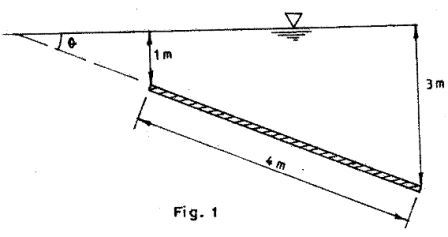Knec Construction Management I, Workshop Technology And Water Supply October/November 2015 Question Paper
Knec Construction Management I, Workshop Technology And Water Supply October/November 2015
Course:Diploma In Civil Engineering Module Ii
Institution: Knec question papers
Exam Year:2015
CONSTRUCTION MANAGEMENT 1
WATER SUPPLY
Oct./Nov.2015
Time : 3 HOURS
THE KENYA NATIONAL EXAMINATION COUNCIL
DIPLOMA IN CIVIL ENGINEERING
MODULE II
CONSTRUCTION MANAGEMENT I WORKSHOP TECHNOLOGY AND WATER SUPPLY
3 HOURS
INSTRUCTION TO CANDIDATES
Write your name and index number in the space provided above
Sign and write the date of examination in the space provided above
You should have mathematical table /calculator for this examination.
This paper consists of eight questions in three section A,B and C.
Answer five question : choosing three questions from section A and B
And ONE Question from section c in the space provided in this question paper.
All questions carry equal marks.
Maximum marks for each part of a question are as indicated.
Do Not remove any page from this question paper
Candidates should answer the question in ENGLISH.
For examiner’s use only
Image
SECTION A: CONSTRUCTION MANAGEMENT I
ANSWER ANY THREE QUESTIONS FROM THIS SECTION.
1. (a)Explain the following terms as used in management:
i. Management;
ii. Organization. (4 marks)
(b) (i) I. Define the term planning.
II. Outline six reasons for planning.
(ii) Explain the following principles of management:
I. Scalar chain;
II. Unity of direction. (10 marks)
(c) State six characteristics of a successful construction manager. (6 marks)
2. (a) (i) Explain the term contract.
(ii) In the formation of a contract between client and a contractor there are essential elements. Describe the following three elements:
i. Acceptance
ii. Genuine consent;
iii. Consideration. (8 Marks)
(b) As a construction manager of a project which you are administering, advice your client on
The four method by which the contact may discharged. (8 marks)
(c) Explain a voidable contract. (4 marks)
3. (a) State four characteristics of each of the following type of contractions:
i. Small contractors;
ii. Large contractors. (8 marks)
(b) As a construction manager in charge of a proposed site where construction is about to
Commence, explain the requirement associated with site layout in respect to following:
i. Access;
ii. Storage areas;
iii. Plant area;
iv. Accommodation. (12 marks)
4. (a) (i) Distinguish between the following contract procurement methods:
I. Cost plus fixed fee
II. With bill of quantities
(ii) State three advantages of each of the procurement methods in 4a(i) above.(10 marks)
(b) (i) Outline a typical agenda for a proposed site meeting for a continuing construction
Project for which you are the construction manager.
(ii) State three reasons for holding site meetings. (10 Marks)
SECTION B:WORKSHOP TECHNOLOGY
Answer any one question from this section.
5. (a) Draw a well labelled single line block diagram showing the sequence of control
Equipment at the intake point for a domestic installation including an off-peak water
Heating system (6 marks)
(b) Draw a diagram showing the procedure for measuring the value of resistance using a
Voltmeter and an ammeter method.(6 marks)
(c) State the recommended size of cable and fuse rating for each of the following final
Circuits on a consumer control unit:
i. Light circuit;
ii. Ring power circuit
iii. Water heater circuit;
iv. Cooker circuit. (8 marks)
6. (a) Define the following terms as used in electric circuit:
i. Open circuit;
ii. Closed circuit;
iii. Short –circuit. (3 marks)
(b)list any four factors that affect the choice of a wiring system to be used in a given
Premise. (2 marks)
(c) (i) Draw a labelled construction diagram of a 4 – core ,PVC insulated and sheathed
armoured cable.
(ii) State the function of each part labelled in c (i) above. (12 marks)
(d) Describe each of the following:
i. Circuit breakers;
ii. Final circuits;
iii. Ring circuits; (3 marks)
Section c: WATER SUPPLY
7. (a) (i) Distinguish between discrete and flocculent particles in a sedimentation tank.
(ii) Explain the following water treatment processes giving three examples of each:
I. Physical treatment process;
II. Chemical treatment process; (12 marks)
(b) Outline the procedure for:
(i) starting a centrifugal pump;
(ii) stopping centrifugal pump. (8 marks)
8. (a) A rectangular plate 4 m deep and 2 m wide is immersed in water so that its 2 m side is parallel to the water surface as shown in the figure 1 . The top edge is 1 m and bottom edge is 3 m below the water surface. Determine the total pressure and the point at which it acts.

(b) Distinguish between the following types of flow in a pipe:
i. Uniform and non uniform flow;
ii. Steady and unsteady flow;
iii. Streamline and turbulent flow. (12 marks)
(c)In a laboratory experiment, a cippoletti notch having a crest length of 400 mm is used to
Measure the flow of water in a rectangular channel 600 mm wide and 75 mm deep
If the water level in the channel is 50 mm above the crest, determine the discharge
Take coefficient of discharge as 0.63. (7 marks)
More Question Papers
Exams With Marking Schemes
Popular Exams
Mid Term Exams
End Term 1 Exams
End Term 3 Exams
Opener Exams
Full Set Exams
Return to Question Papers